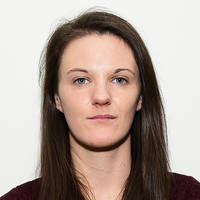Long Read Sequencing
Scientific Operations
Currently we are using platforms from the following providers within the team:
Pacific Biosciences
The team utilises one Sequel instrument and four Sequel II instruments, this platform is capable of producing reads up to 175 kbp in length. The Sequel instrument is capable of generating up to 20 Gbp sequence with average read lengths up to 30 kbp. The Sequel has a capacity of 14x, 10 hour runs per week. Each Sequel II instrument can generate up to 160 Gbp (Continuous Long Reads) or up to 500 Gbp (HiFi/ CCS reads) per SMRT cell. The Sequel II instruments each have a capacity of 9x, 15 hour (CLR) or 5x, 30 hour (CCS) runs per week.
The main applications are:
- Whole Genome Sequencing (further information)
- Targeted Sequencing (further information)
- Complex Populations (further information)
- RNA Sequencing* (further information)
- Epigenetics (further information)
*Parts of process not supported within DNA Pipelines Operations – contact us for more information.
Oxford Nanopore Technologies
The team generate long read sequence using either the GridION or PromethION instruments, depending on amount of sequence data required for a particular project. The GridION platform allows us to run 5x MinION flow cells to achieve up to 30 Gbp per cell over the course of 48 hours. The PromethION uses larger flow cells designed to generate over 50 Gbp in a 72 hour period, our instrument currently allows 12 of these cells to be run concurrently. This technology is capable of generating ultra-long reads, up to 2 Mbp in length although most sequences are significantly shorter.
The main applications are:
- Whole Genome Sequencing
- RNA Sequencing
Further information can be found here.
Bionano Genomics
The team offer an optical mapping service allowing rapid, high-throughput, long-range genome mapping using the Saphyr® instrument. The system is capable of analysing long molecules from 100,000 bp to megabase pairs and can generate 640 Gbp per chip per day (320 Gbp per flowcell of molecules larger than 150 kbp).
The main applications are:
- High-resolution physical genome maps
- Improve contiguity of sequence assemblies
- Identify structural Variation
Further information can be found here.
10X Genomics
Although not technically a long read platform the team offers the 10X Genomics linked-reads approach using Illumina® short reads to provide long-range information. The Long Read Sequencing team are responsible for making the linked-read library that requires 8 samples to be processed together using the Chromium Controller to barcode the samples. The completed libraries are passed on to the High-throughput DNA Sequencing team within DNA Pipelines Operations for sequencing on our fleet of Illumina® sequencing machines. This can be an alternative method for generating de novo assemblies and/or scaffolding larger genomes. This can be a good alternative approach if there is a limited amount of DNA available for sequencing. However, the de novo (Supernova) analysis is optimised for human genomes and other non-human genome assemblies may vary in quality.
The main applications are:
- Genome Sequencing (further information)
- Exome Sequencing (further information)
- de novo Assembly (further information)
Please note, the 10x Genomics service will only be available until June 2020.
Our people
Core team

Mr Timi Odimegwu Adewumi
Advanced Research Assistant

Mr Craig Corton
Product Lead

Ritoza Das
Advanced Research Assistant

Mr Tavis Mason
Advanced Research Assistant

James Watts
Team Lead

Danni Weldon
Product Lead
Previous core team member

Jale Dolucan
Advanced Research Assistant